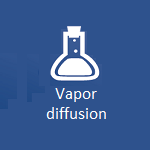![[ Deutsch ]](../../images/GERM001.gif)
![[ Polski ]](../../images/POLA001.gif) Thermal Bridge Standards in Europe
Thermal Bridge Standards in Europe
AnTherm is fully validated according to EN ISO 10211:2007: AnTherm has been qualified as a "Class A" tool – as for two- and three-dimensional, stationary precision method. This validation is mandatory in the framework of the EPBD-regulations of the most EU Member States.
![With AnTherm generated colored representation to visualize heat stream density distribution within building corner consisting of brick masonry and concrete ceiling [explanatory shown pictures show the distribution of heat stream density; areas shown in red emphasize high heat densities]](../images/AnTherm_Info_01_small.png)
European standards "Thermal Bridges in building construction Heat flows and surface temperatures - Part 1: General calculation methods" (EN ISO 10211-1) pertaining to aspects of thermal performance of building constructions are already available since 1996. The EN ISO 10211:2007 "Thermal bridges in building construction — Heat flows and surface temperatures — Detailed calculations" shows further development of the standardization. The standard EN ISO 6946 "Building Components or Building Elements - Calculation of Thermal Transmittance" is also available. The EN ISO 10077-2:2003 "Thermal performance of windows, doors and shutters - Calculation of thermal transmittance - Part 2: Numerical method for frames" shall be also considered.
The ramifications of the adoption of these European Standards became apparent: they describe the substance of essential tasks for designers, manufacturers, and builders, as well as their significance for quality control in the field of energy conservation.
For more detailed description of of the concepts relevant to evaluating thermal bridges, see "Primary Concepts".
The purpose of the standard EN ISO 10211 "Thermal Bridges - Calculation of Surface Temperatures and Heat flows" is explicitly stated as:
- the calculation of minimum surface temperature in order to assess the risk of surface condensation
and  the calculation of heat flows (for the constant, stationary flow case; i.e. time independent temperature distribution) in order to predict overall heat loss from a building
the calculation of heat flows (for the constant, stationary flow case; i.e. time independent temperature distribution) in order to predict overall heat loss from a building
and- determination of linear and point thermal transmittance and surface temperature coefficients (of thermal bridges).
Furthermore, "high precision" methods of calculation are demanded, whereby precision criteria which must be satisfied by the method chosen are defined in the standard.
 According to EN ISO 6946 "Building Components or Building Elements - Calculation of Thermal Transmittance", calculation of heat transfer coefficients of parallel plane surface building components shall be performed based, of course, on one-dimensional models. For such components, composed of surface parallel layers of thermally homogeneous or non-homogeneous materials, a well-known method of estimation (ISO-method) can be implemented in order to obtain a design thermal resistance - assuming the maximum relative error remains "negligible".
According to EN ISO 6946 "Building Components or Building Elements - Calculation of Thermal Transmittance", calculation of heat transfer coefficients of parallel plane surface building components shall be performed based, of course, on one-dimensional models. For such components, composed of surface parallel layers of thermally homogeneous or non-homogeneous materials, a well-known method of estimation (ISO-method) can be implemented in order to obtain a design thermal resistance - assuming the maximum relative error remains "negligible".
For all other heat flow patterns, i.e. for all cases of more than one dimension, in particular in the presence of thermal bridges, the standard EN ISO 10211 "Thermal Heat Bridges" requires the implementation of numerical methods of evaluation.
See also: Validation of AnTherm
Further standards to be considered (exemplary):
- ISO 7345 "Thermal insulation - Physical quantities and definitions"
- ISO 10456 "Building materials and products - Hygrothermal properties - Tabulated design values and procedures for determining declared and design thermal values"
- ISO 13370 "Thermal performance of buildings - Heat transfer via the ground - Calculation methods"
- ISO 13786 "Thermal performance of building components - Dynamic thermal characteristics - Calculation methods"
- ISO 13788 "Hygrothermal performance of building components and building elements - Internal surface temperature to avoid critical surface humidity interstitial condensation - Calculation methods"
- ISO 13789 "Thermal performance of buildings - Transmission and ventilation heat transfer coefficient - Calculation method"
- ISO 14683 "Thermal bridges in building construction - Linear thermal transmittance - Simplified methods and default values"
- etc.
Interested?
Contact
us for more information.
Or try and evaluate the demonstrational version just now!




















